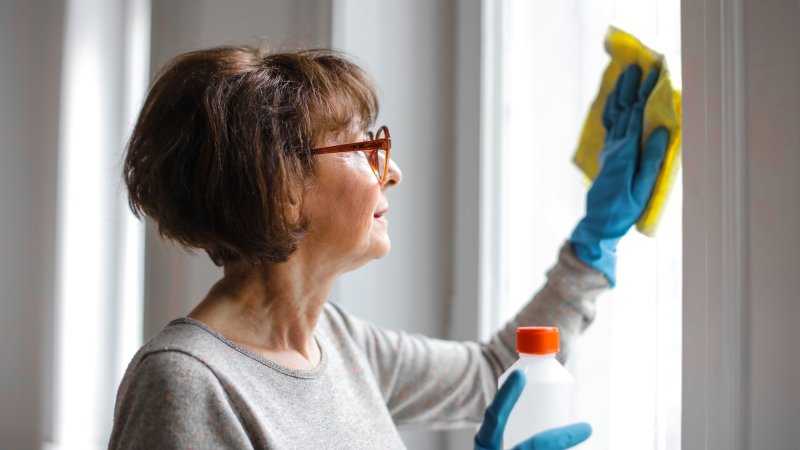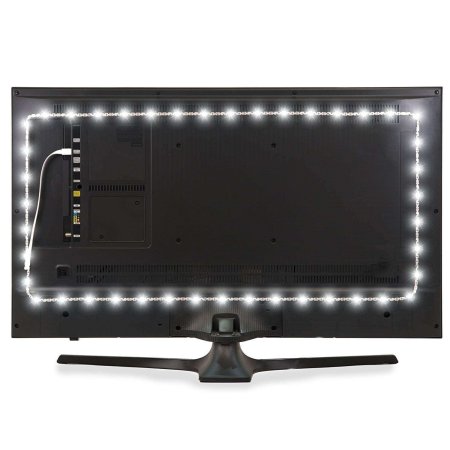

Analysis paralysis—being so overwhelmed by options you can’t pick a path—has new meaning thanks to climate change. Making the “right” choice has never been more complicated, but we’re here to help. This is Impact, a new sustainability series from PopSci.
A lower utility bill at the end of the month can be great. But reducing energy consumption isn’t just good for our wallets; it can also help us reach various state and federal emissions reduction goals. According to the most recent report from the Intergovernmental Panel on Climate Change, personal lifestyle and behavioral changes “can result in a 40-70 percent reduction in greenhouse gas emissions by 2050.”
However, taking necessary steps to trim our home-related emissions and utility bills substantially is out of reach for many of America’s renters, who account for 36 percent of American households.
The most impactful energy efficiency projects for the home need to be undertaken by the property owner. And as any renter could tell you, many landlords don’t want you to use a nail to hang a picture frame or paint the walls, let alone swap out large inefficient appliances or ancient water heaters.
“You largely probably can’t even see the energy equipment in your building,” says Maggie Kelley Riggins, the built environment project manager for the Southeast Energy Efficiency Alliance, an Atlanta-based nonprofit that works to advance energy efficiency goals in southeastern states. Anything that involves heating, cooling, or piping gas into the home is beyond the ability of a renter to do it themselves. Still, those are the products that create the most emissions in a home; Massachusetts utilities’ collective energy efficiency effort points out that heating and cooling accounts for around half of a home’s energy needs alone.
Additionally, many renters can’t take advantage of various state or federal financial incentives to make energy-efficient swaps since many of those targets the actual owner of a home or property. And even subsidies aren’t always enough to lure landlords into undertaking weather-proofing projects or buying expensive energy appliances before the devices die since the landlord will pay for the upgrade but not enjoy the benefit of lower utility bills.
[Related: Energy costs hit low-income Americans the hardest.]
So what’s actually possible for renters to do on their own? Not much, energy efficiency experts say. But while many of the purchases or projects a landlord would have to do are relatively pricey, many of the projects you can do on your own are fairly budget-friendly or even free.
Upgrade your light bulbs and buy removable weatherizing materials
“One easy thing you can do is replace old incandescent light bulbs with more efficient LED ones,” says Lily McVetty, a program assistant with Efficiency Maine, a quasi-state agency that administers energy efficiency programs in the New England state. “I was able to get a three pack of 60-watt, soft-white LED bulbs for just three bucks—that’s a buck a light bulb, and it will help me save over $20 a year.”
When you leave the rental, you can take the bulbs. Keep the inefficient ones in a box to swap back in when you leave or ask your landlord to take them.
Additionally, Kelley Riggins suggests adding weather stripping, or different materials used to insulate doors and other areas of the home with the potential for draft, as a “low-cost, low-skill” way to insulate your doors and windows, preventing heated or chilled air from escaping your home and helping you lower the thermostat and still stay comfortable. Window inserts do a similar job, and you can sometimes snag-free or low-cost ones from local efficiency advocates, McVetty says.
“There are some companies and nonprofit organizations that will actually come into your home and they’ll custom-design window inserts to try to decrease drafts,” says McVetty. “In the winter, they reduce drafts. In the summer, you can just pop them out without causing any damage to the existing window frame.” Volunteers with Window Dressers, a Maine-based nonprofit, build and install low-cost, custom window inserts.
Change your energy usage behaviors
Making small adjustments to when you use energy-hungry appliances can save you money and regulate your home’s temperature. For example, washers and dryers generate heat while operating, so avoid using them when home or on a hot afternoon. Partially closing blinds or window coverings when you’re not home can also help keep a room cold on hot days. According to Efficiency Maine, opening them overnight and first thing in the morning helps bring naturally cooler air into the home.
If you can make changes to your utility account, reach out and ask about demand response programs that put a little money in your pocket. From small rural electric cooperatives in Minnesota to investor-owned power providers serving major metropolitan areas, there are initiatives operated by utilities across the country to lower the sharp spikes in electricity usage at popular energy consumption times —like when everyone is cooking, watching television, or reading articles online.
Utilities use mountains of data to predetermine how much energy their customers will want at any time of day. But with certain demand response programs, a utility can inform you of when high energy demand periods are occurring so that you can either manually limit your energy consumption or allow the utility to do so for you. These programs benefit the utility by helping them minimize the number of times they need to fire up costly peaker plants that are only required to satisfy high demand (like on a hot summer day). That helps both you and the utility save money.
[Related: What you need to know about converting your home to solar.]
Your utility might even have an option for you to pay a bit extra every month to support renewable energy developments that add electricity to their system. Whether you do this through your local utility, an energy supplier, or other intermediaries depends on what state you live in. In Pennsylvania, for example, you can shop for clean energy suppliers through a website approved by the state utility regulator. In the Indianapolis, Indiana, area, local utility customers can add a premium to their monthly bill to support green energy.
Talk to your landlord
Kelley Riggins suggests that if you really want to reduce the environmental footprint of your rental home, try speaking with your landlord or property manager about energy efficiency and weatherization topics. Ask questions about the building’s maintenance and appliance replacement plans, like the efficiency of common area light bulbs or how often they will change out heating and air conditioning system equipment.
“[Renters] pay the bills, so having frank conversations with your property management companies, sometimes even with [an individual] landlord, are possible,” says Kelley Riggins. “I’m not saying that it is necessarily always fruitful but it’s possible to have those conversations where you’re saying ‘right now my energy bill is 10 percent of my income, I’d love for it to be reduced.'”
And while you might wish your landlord would do their homework, it can’t hurt to find information on different rebates or subsidies available in your state or municipality. Even strategically planted trees can help alleviate intense temperatures by naturally cooling a home in hot weather, thus reducing how much energy is needed to do so artificially. In Washington, D.C. For example, a city-run program notes that the free trees it plants for residents can help “decrease heating bills [in the winter] up to 15 percent and decrease cooling bills up to 50 percent [in the summer].”
Renting or buying an electricity usage monitor to determine what appliances are using the most energy is another option, McVetty notes. In Maine, she explains, you can borrow one from over 60 libraries, so check with your local library or other community organizations to see what is available in your community.















